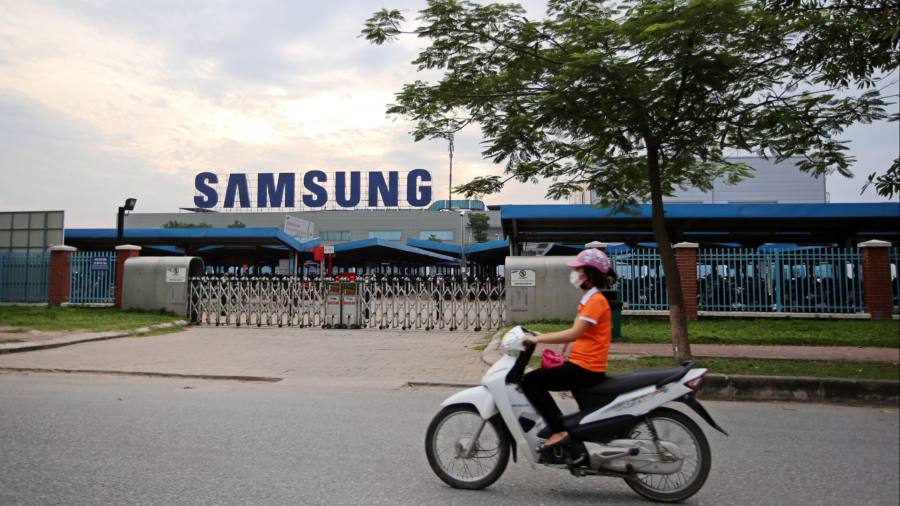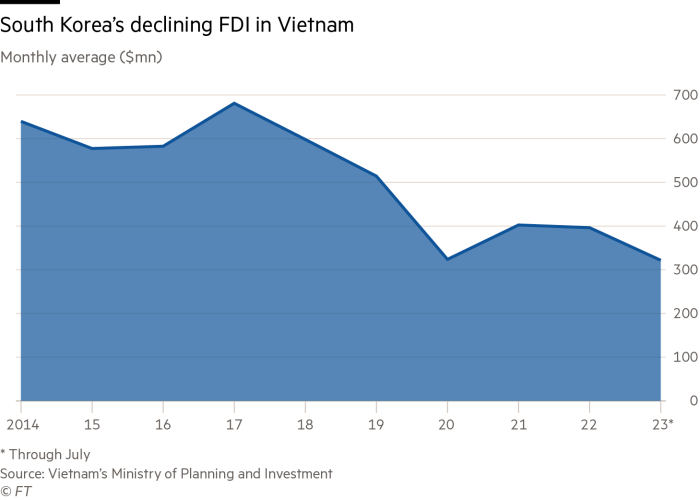
Receive free Technology updates
We’ll send you a myFT Daily Digest email rounding up the latest Technology news every morning.
Hi everyone, this is Cissy from Hong Kong. It’s been two months since I wrote my last newsletter to you. While I was away, I finished a summer investigative reporting course at Columbia University and I hope to deliver you more good in-depth reporting with the new skills I’ve learned.
When I was in New York, I met a number of people from China who came to the US via South America, traversing the treacherous Darien Gap between Colombia and Panama before eventually making their way over the Mexican border. One 36-year-old man told me he made the journey alone, leaving his wife and three children in China due to the dangers. Now settled and working as a cook in a Chinese restaurant in Flushing, he told me he might have his family cross the Darien Gap, too, if they cannot get a visa to join him.
His story reminds me of a Vietnamese worker I came across a few years ago in a Chinese factory in Vietnam’s Bac Giang province. That man, named Manh, had crossed the border into China in 2013 in hopes of earning enough money to build a house for his new wife back in Vietnam. Lured by the prospect of a higher salary in Dongguan — known as the “world’s factory” for its prosperous manufacturing industry — Manh’s wife snuck into China via the same route not long after.
Years later, global supply chain shifts brought the couple back to Vietnam. Many mainland manufacturers started to move their operations to Vietnam due to its lower wages and close proximity, sparking a growing demand for skilled workers and Chinese-speaking managers. Manh secured a job on a production line at a Chinese factory in Bac Giang and in three years was promoted to the position of shift supervisor.
A smartphone-shaped shadow

Vietnam, a key manufacturing and export base for Samsung, is facing growth challenges as the South Korean conglomerate’s smartphone business endures a slump and other Korean companies scale back their investment in the south-east Asian country, write Nikkei Asia’s Kim Jaewon and Lien Hoang.
Vietnam recorded a 23 per cent year-over-year decline in smartphone exports in the first quarter, with Samsung thought to make up the majority of the dip. South Korea’s overall foreign direct investment in Vietnam, meanwhile, plunged around 68 per cent on the year in the first five months of 2023.
Samsung and Vietnam have enjoyed a mutually beneficial relationship for years, with the company taking advantage of the country’s lower wages and costs, political stability and educated workforce, while Vietnam has hoped to leverage Samsung’s investments to move up the value chain.
Analysts say Samsung’s Vietnam business may continue to show signs of weakness for a couple more quarters, as the company is unlikely to ramp up production in the country until demand returns and inventory levels fall. Sources also say the company is unlikely to build a chip plant in the country as Hanoi has hoped for.
Take two
Sony will aim to replicate its Hollywood success in India with the recent approval of a deal with Zee to create a $10bn entertainment conglomerate, write the Financial Times’ Kana Inagaki and Chloe Cornish.
The Japanese group faces a formidable challenge from Disney Star, India’s largest television network, and other deep-pocketed rivals such as Indian tycoon Mukesh Ambani’s JioCinema streaming service, which are jostling for dominance of the entertainment market in a country of 1.4bn.
Nevertheless, Kenichiro Yoshida, Sony’s chief executive, remains convinced of the opportunities for the combined group.
Sony’s story in India started 40 years ago, when Japanese companies regarded South Asia as merely another growing market for electronics. But India, with the world’s biggest population, a rapidly expanding middle class and an insatiable appetite for entertainment, is now worth much more to the Japanese conglomerate.
Innovation meets regulation
Several big Chinese tech companies, including Baidu and ByteDance, have recently launched their own chatbots to the public after winning approval from authorities. But regulatory constraints and other structural hurdles still threaten to hold back progress on developing competitive, moneymaking applications, writes Nikkei Asia’s Cissy Zhou.
Unlike their US rivals, Chinese companies can only offer their generative AI services to a restricted number of users until they obtain approval to roll them out to the general public. In the West, generative AI tools catering to various industries are already widely available, and new ones are constantly being developed. US tech companies are also continuing to build new versions of their AI models and further refine their algorithms.
Adding to the uncertainty in China, more comprehensive legislation is expected to come as China’s State Council is set to submit a draft artificial intelligence law — no details have been revealed yet — for review by the country’s top legislative body this year.
Huawei’s big break?
Huawei has generated a lot of hype — and speculation — with its latest smartphone, the Mate 60 Pro. Released domestically with unusually little fanfare, the phone appears to be the company’s first 5G handset with its own chips since the start of a US clampdown on the company, write Nikkei Asia’s Cheng Ting-Fang and Lauly Li.
A smartphone with a self-developed 5G chipset would mark a significant milestone for Huawei in the face of Washington’s restrictions, which have cut Huawei off from critical chip supplies and production partners.
Online teardown videos show that the phone comes with a Kirin mobile chipset developed by Huawei, and can support 5G connectivity and satellite phone calls. Huawei also developed its own WiFi, Bluetooth and power management chips for the device.
While Huawei declined to provide any details on the phone, Bloomberg’s teardown of the phone shows that some Mate 60 Pro handsets appear to use a 7-nanometer 5G chipset made by SMIC. Sources have told Nikkei Asia, however, that the chips spotted in the Mate 60 Pro are from an early batch made in small volumes.
Suggested reads
-
KKR to list chip equipment maker as Tokyo experiences IPO revival (FT)
-
Munich auto show highlights China’s presence in luxury EV race (Nikkei Asia)
-
Asean needs digital single market to spur decacorns: Temasek CEO (Nikkei Asia)
-
China’s Baidu and ByteDance launch AI chatbots to public (FT)
-
Arm targets valuation of up to $52bn in IPO (FT)
-
VinFast’s share price ‘baffling’ for sceptics of Vietnam EV maker (Nikkei Asia)
-
Japan seeks revival as a semiconductor powerhouse (FT)
-
Japan investors in US tech face tougher scrutiny over China ties (Nikkei Asia)
-
Billionaire founder of Foxconn leaves board to pursue Taiwan presidential bid (FT)
-
Indonesia’s Gojek ties up with Vietnam EV battery-swap start-up (Nikkei Asia)
#techAsia is co-ordinated by Nikkei Asia’s Katherine Creel in Tokyo, with assistance from the FT tech desk in London.
Sign up here at Nikkei Asia to receive #techAsia each week. The editorial team can be reached at [email protected].